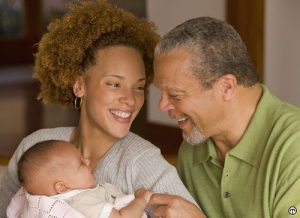 (NAPSI)—Having a grandparent or other trusted caregiver help take care of a newborn or infant not only offers a much-needed rest for parents, but also provides special together time. Before you take on this important task, it’s a good idea to brush up on the latest safe infant sleep recommendations. A new video from the Safe to Sleep® campaign—specifically for grandparents—points out the practices that might be different from when grandparents were new parents.
(NAPSI)—Having a grandparent or other trusted caregiver help take care of a newborn or infant not only offers a much-needed rest for parents, but also provides special together time. Before you take on this important task, it’s a good idea to brush up on the latest safe infant sleep recommendations. A new video from the Safe to Sleep® campaign—specifically for grandparents—points out the practices that might be different from when grandparents were new parents.
Remember to always place the baby on his or her back to sleep, for naps and at night. Back sleeping is the best way to reduce the risk of Sudden Infant Death Syndrome (SIDS), the unexpected death of an infant younger than 1 year of age from no apparent cause. You may have heard SIDS described as “crib death” or “cot death.” Babies who usually sleep on their backs, but who are then placed to sleep on their stomachs are at very high risk for SIDS.
What Grandparents and Other Trusted Caregivers Can Do To Reduce the Risk of SIDS and Other Sleep-Related Causes of Infant Death
Always place the baby on his or her back to sleep, for naps and at night.
Use a firm sleep surface, such as a mattress in a safety-approved crib*, covered by a fitted sheet.
Keep loose bedding, blankets, quilts, crib bumpers, soft objects, and toys out of the baby’s sleep area.
Do not smoke or allow anyone to smoke around the baby.
 Answers to Common Safe Infant Sleep Questions
Answers to Common Safe Infant Sleep Questions
Experts at the National Institutes of Health have answers to your questions about keeping the baby safe during sleep.
- Are babies more likely to choke if they spit up while sleeping on their backs?
- No. Healthy babies naturally swallow or cough up fluids. In fact, babies may actually clear fluids better when placed on their backs to sleep.
- I put my kids to sleep on their stomachs when they were babies. Was that wrong?
- No—It wasn’t wrong, but we didn’t know as much about SIDS or ways to reduce the risk until the early 1990s. Many of us were placed on our stomachs to sleep and survived, but some babies didn’t. Now that research has shown that back sleeping is the most effective way to reduce the risk of SIDS, it’s important that all babies are placed on their backs to sleep, for naps and at night. Every sleep time counts.
- Why can’t I use crib bumpers or a blanket in the crib?
- Crib bumpers and blankets are associated with higher risk for SIDS, suffocation, and other injuries. The best way to reduce these risks is to keep soft objects, toys, crib bumpers, and loose bedding out of the baby’s sleep area. This includes pillows, blankets, quilts, and sheepskins.
Learn More: The Eunice Kennedy Shriver National Institute of Child Health and Human Development (NICHD) leads the Safe to Sleep® campaign to educate parents, grandparents, and other trusted caregivers about keeping babies safe while they sleep. The Safe to Sleep® campaign offers materials that you and your family can download or order for free. You can find the new video and brochures for grandparents and other trusted caregivers and other materials at http://safetosleep.nichd.nih.gov/grandparents.
Cynthia Lopinto
Latest posts by Cynthia Lopinto (see all)
- Honey Chocolate–Covered Pretzels - April 3, 2018
- True Colors - April 3, 2018
- Spring Cleaning…You’ve Gotta Be Kidding - April 2, 2018
- Should You Stay In Your Home Or Move During Retirement? - April 2, 2018
- Hawaiian Plants For Good Health - April 2, 2018
 Home Front Magazine A Publication for Seniors
Home Front Magazine A Publication for Seniors

